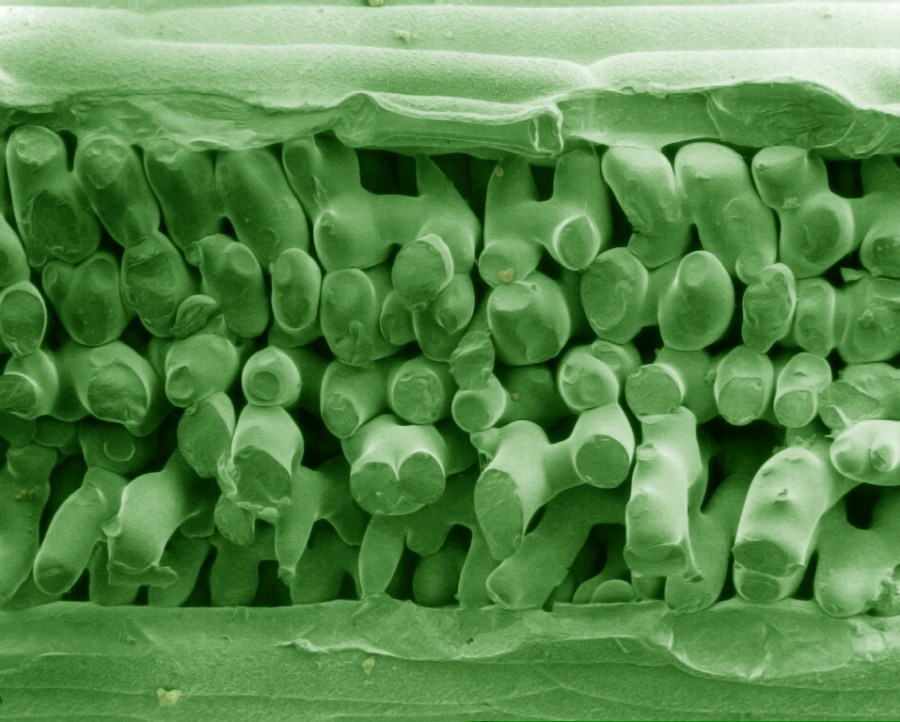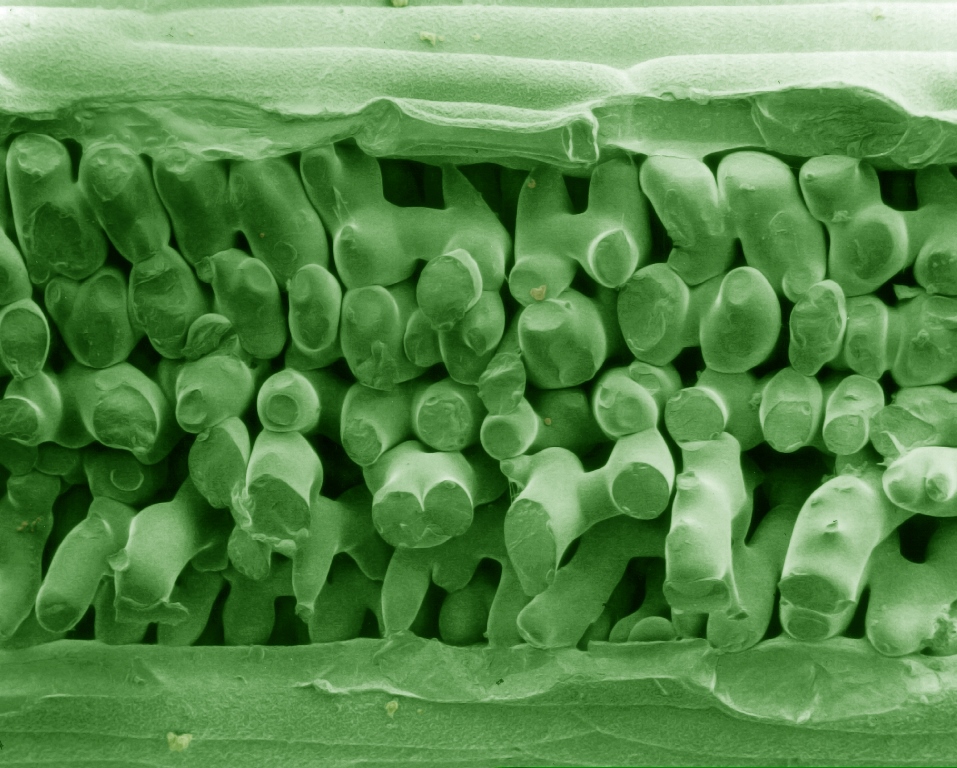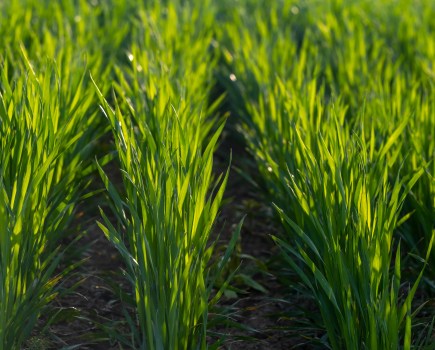Powerful, consistent and complete performance is what Syngenta claims of its new SDHI fungicide Elatus Era. CPM reviews the research that backs this up.
By Tom Allen-Stevens
Most growers are aware that it takes a considerable investment to bring a new agchem product to market – around €250M is the figure claimed by manufacturers.
The R&D that lies behind this is carried out at centres all over the world. Much of the research behind Solatenol, the active ingredient in Syngenta’s new SDHI Elatus Era (benzovindiflupyr+ prothioconazole), took place here in the UK, at Jealott’s Hill in Berks.
With a wealth of science on our doorstep, CPM took the opportunity to get a thorough briefing, not just on Solatenol’s field performance, but on how it moves in the plant.
Consistent performance
Recent field trials have backed up previous data and confirms Solatenol’s consistent performance, says Syngenta technical manager Jason Tatnell.
He puts much of this down to its potency and how it’s distributed through the leaf.
Leading scientists at Jealott’s Hill in Berks have been investigating these ‘biokinetic’ properties and have made some interesting findings, he notes.
“All SDHIs are xylem-mobile, so tend to move from the base of the leaf to the tip, but they do so at a different pace,” explains Jason.
In one test, leaves were sprayed evenly with Solatenol, and its movement to the tip compared with fluxapyroxad.
Over a period of two weeks, more of the fluxapyroxad had moved to the leaf tip, compared with Solatenol. But hardly any fluxapyroxad was left at the leaf base, while the Solatenol coverage was more even along the leaf (see chart below).
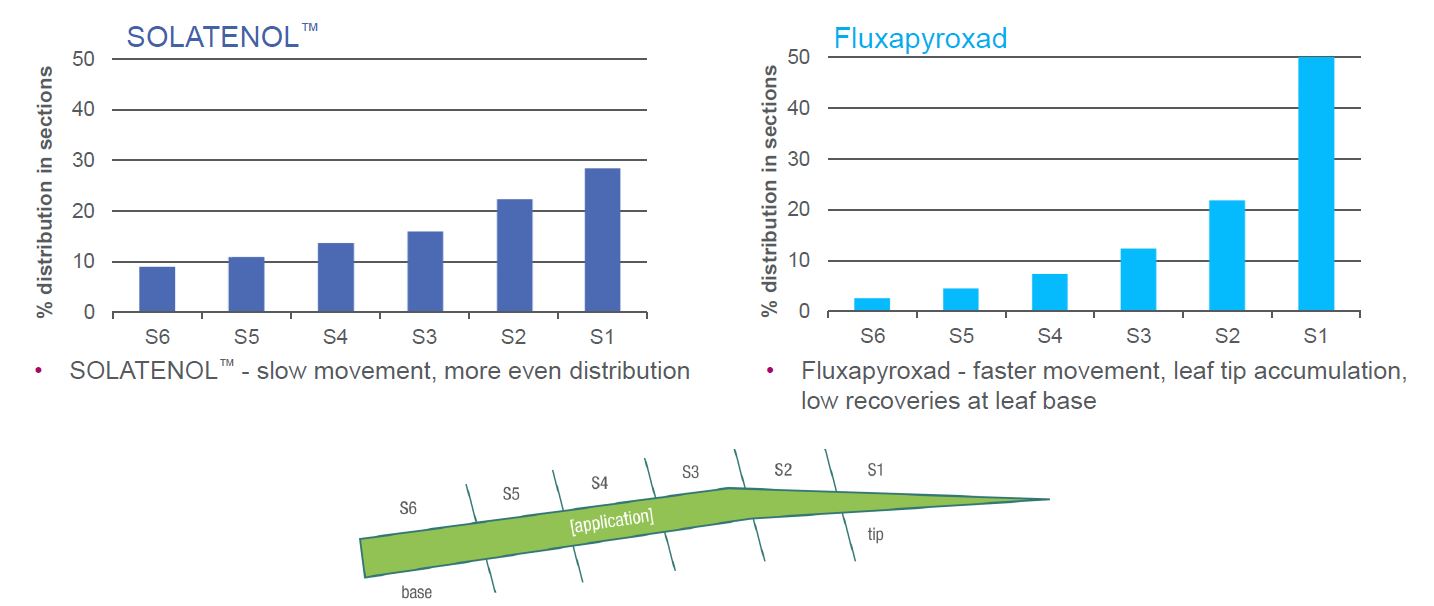
“The implication from an uneven distribution is that sooner or later the concentration will drop low enough to let disease in,” notes Jason.
Similar studies, where brown rust was applied to leaves after two weeks, indicated this is indeed the case (see below).
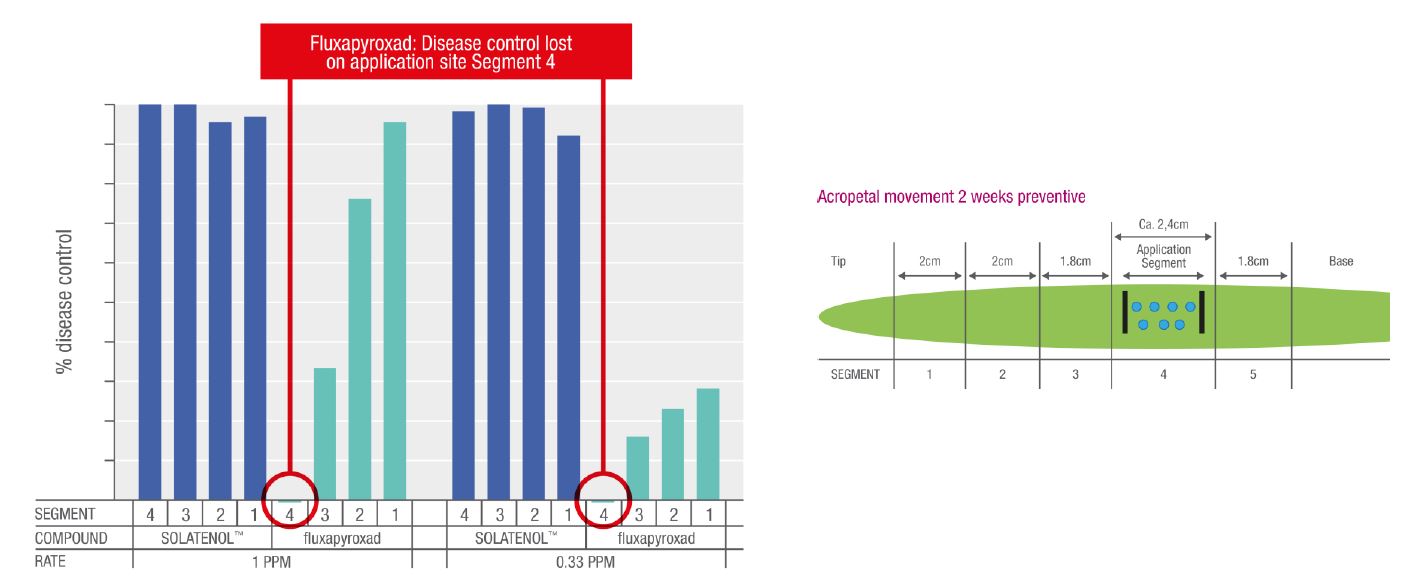
Potency on the pathogen
Small concentrations of Solatenol are needed to ensure protection, however. “Tests reveal it’s up to ten times more potent than its competitors.”
This was shown by studying the IC50 value of a number of leading SDHI active ingredients – the amount needed to slow down the work rate of the SDHI enzyme by 50% (see chart below).
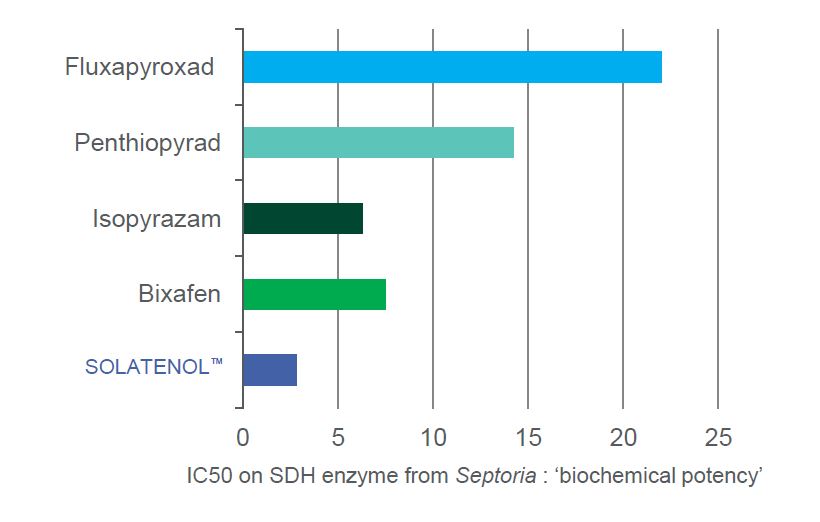
Once an active ingredient gets into a fungal or plant cell, it is broken down through variety of cellular processes, continues Jason. “Differences in degradation rates combine with differences in potency, movement and other characteristics to describe how an ai will behave in the field.
“Our tests show Solatenol is broken down in septoria cells at a slower rate than fluxapyroxad or bixafen.” (see chart below)

Partitioning prowess
Studies on its partitioning between epicuticular wax and leaf cells have found Solatenol has an extended lifetime in both, compared with fluxapyroxad, with higher concentrations of the active ingredient found five weeks after application (see charts below).

“This persistence, along with its potency and the unique way Solatenol moves in the leaf all add up,” says Jason.
“The result is the powerful, consistent and complete performance you need from an SDHI to keep your crop protected from disease throughout the season.”
More on the Elatus Era journey can be found on a dedicated section of the Syngenta website.
There’s information on its field performance, an insight into the discovery of the molecule, and a look inside the leaf, including stunning microscopy pictures showing how septoria and brown rust invade the leaf tissue.

